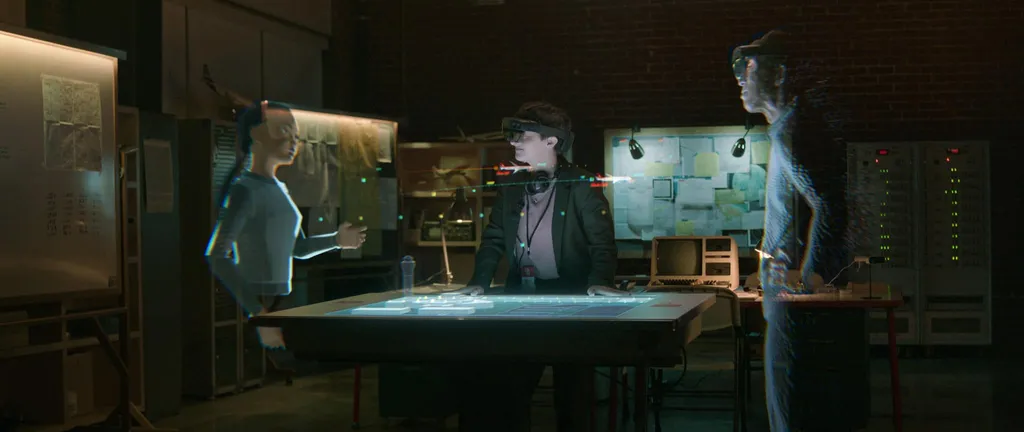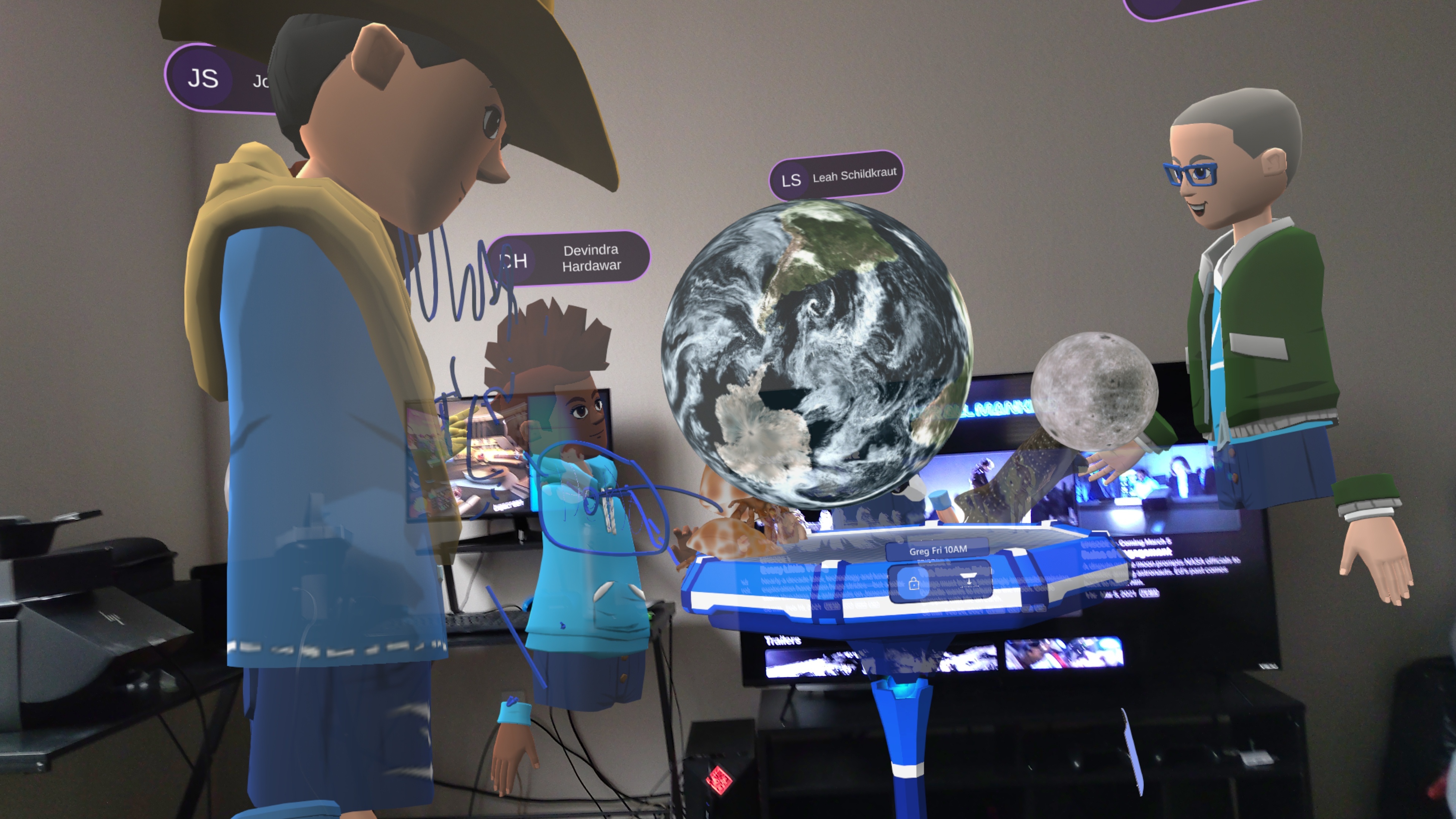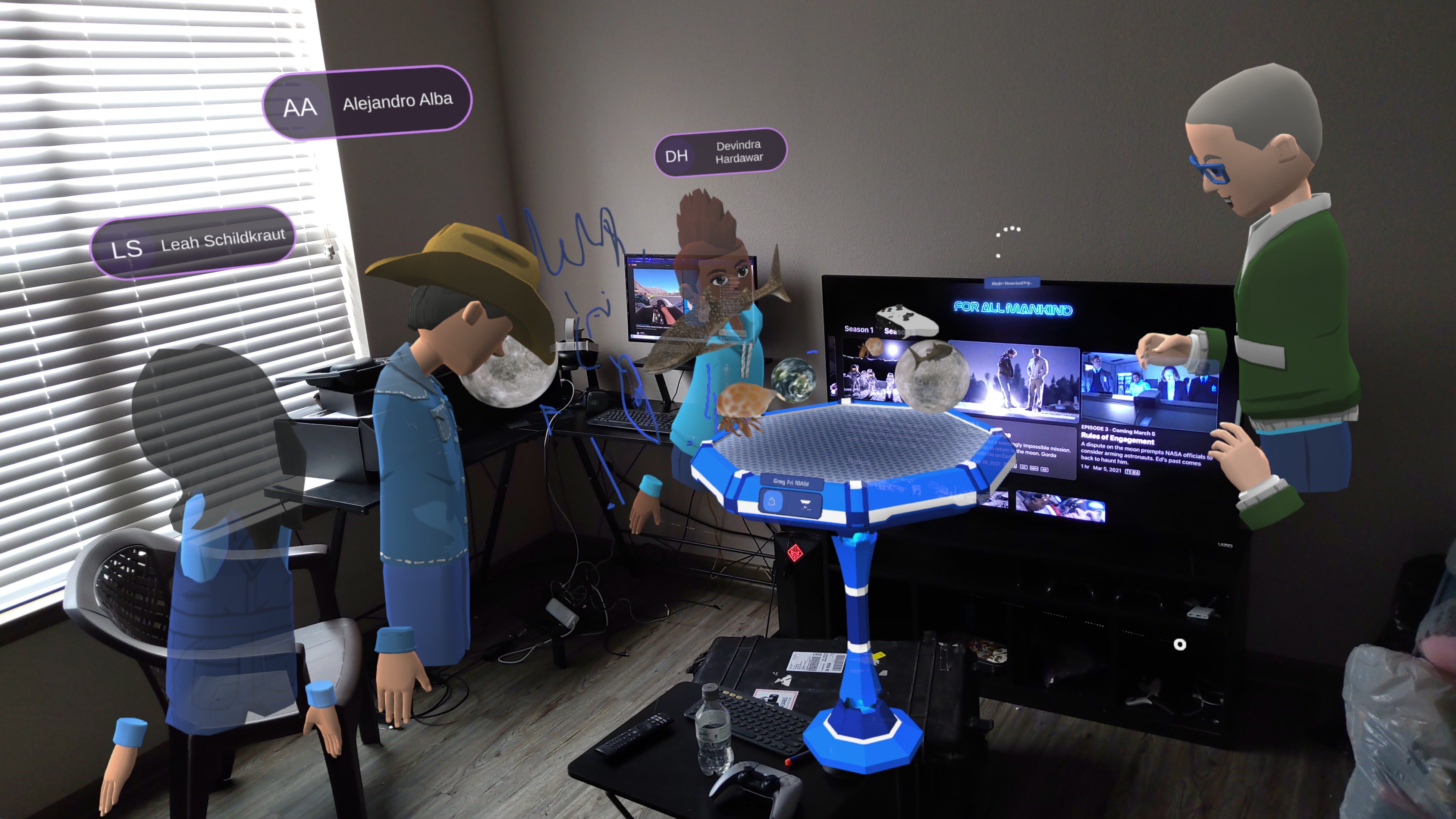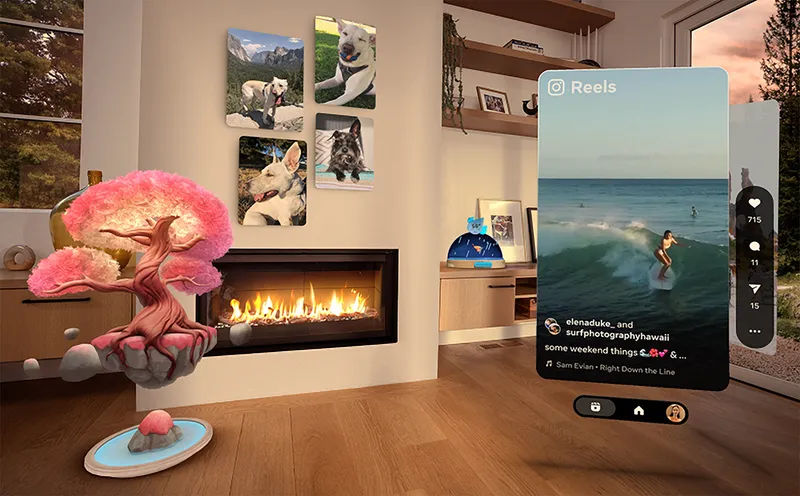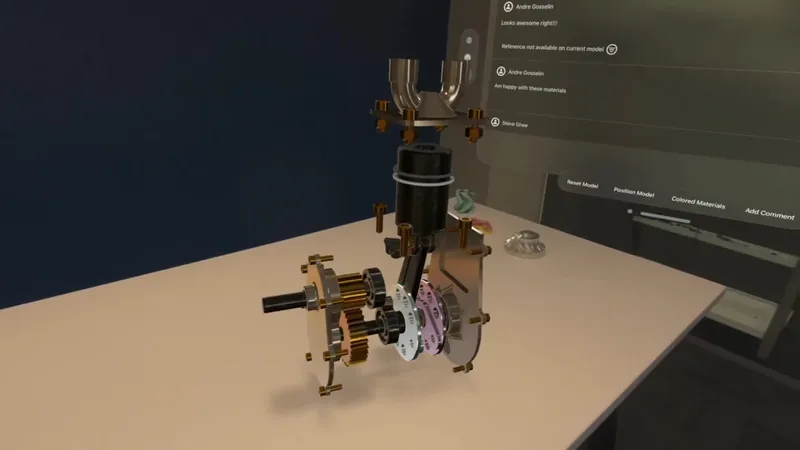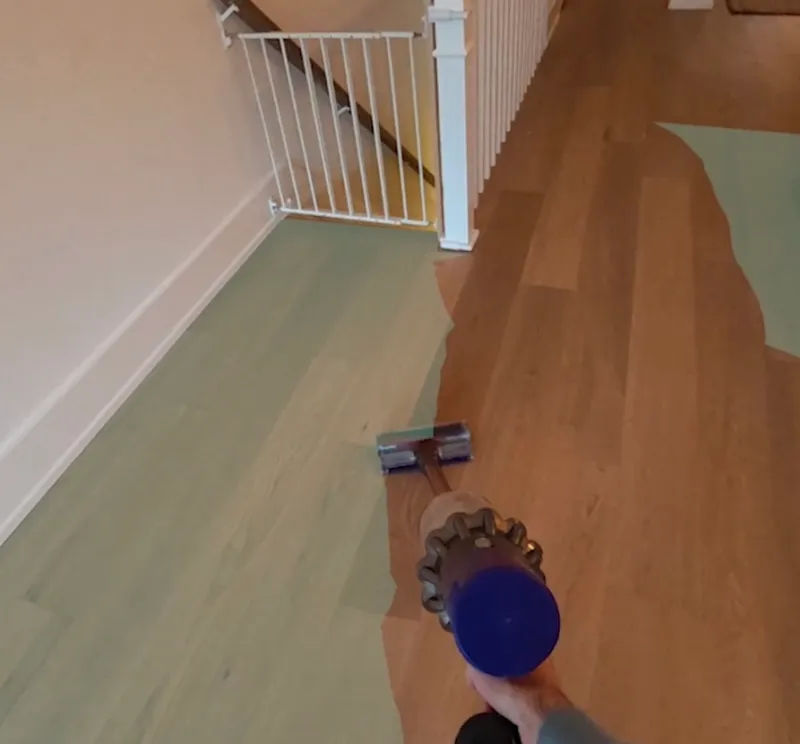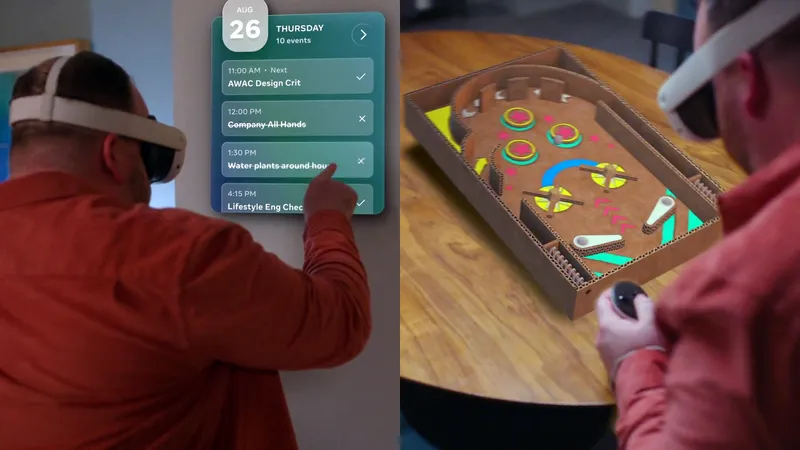With Microsoft Mesh, HoloLens finally goes fully online.
If you have any experience in VRChat, Spatial, Rec Room, AltspaceVR or other social and collaborative VR platforms, the core of Microsoft Mesh might not seem immediately exciting to you. VR has enjoyed multi-user collaboration, socializing and gaming for years now, what exactly makes it so much more exciting in AR?
I had the same reservations going into demo Mesh last week. But, with a HoloLens 2 on my head, those reservations disappeared almost immediately.
Mesh is Microsoft’s new framework for multi-user immersive reality experiences across a range of platforms. It consists of a set of tools developers can use to implement support into existing applications or build new ones. At the core of it is the long-awaited ability for multiple HoloLens users to connect across the world and interact with the same virtual assets. We’ve seen HoloLens used for same-room collaboration and some limited online functionality in the past but, with Mesh, Microsoft is taking the next step.
So, for example, I trialed a collaboration app named Fenix that came with many of the features you’ve come to expect from social VR apps. Along with other members of the press, I could import 3D assets into the space, pass them off to other users or pinch my fingers to draw Tilt Brush-style lines with hand-tracking. A 3D render of a HoloLens 2 sat on top of a table I could anchor to a physical space. I could pinch the model with both hands, resize it, place it over my head, then slot it over a 3D model of the moon I’d imported to the scene. Moving the table itself also moved other avatar’s positions along with it, allowing me to find space for everyone else in my environment.
Again, all fairly familiar concepts, right? What isn’t familiar, however, is just how extraordinary this feels inside HoloLens, which much of the friction of VR removed – AltspaceVR avatars all stood in my room, passing assets between each other with seamless intuition, as if we were all really standing next to each other. Because I’m no longer in VR, I can quickly grab my phone to check through other messages or maybe access a nearby PC should I need to. Even as a simple showcase, Fenix felt like a genuinely natural and incredibly useful extension of existing online collaboration tools – there’s even planned support to bring PC users in via webcam.
Yes there’s the usual restrictions with hardware limitations (and, notably, Microsoft’s promotional materials still don’t realistically represent HoloLens 2’s limited field of view). But, with Mesh integrated, HoloLens starts to shed of some its early prototype stigma and embrace its full potential as a collaborative production tool — and Microsoft says the device is being adopted for production tasks in greater numbers. Obviously VR has its own benefits when it comes to collaboration, and that’s why Microsoft says Mesh isn’t limited to just HoloLens. Director of Mixed Reality Greg Sullivan name-dropped Oculus when talking about compatible devices and confirmed smartphone support was coming too.
Microsoft plans to roll Mesh out in preview at first, gradually adding new features for developers to integrate, including new tools for avatars.
There’s early plans for app integration too. You can request access to a Mesh-enabled version of AltspaceVR, for example, that integrates many of the new features into the social VR platform. Perhaps more excitingly, among other partners at today’s Ignite developer conference, Niantic demonstrated multiplayer Pokemon Go battles running on Mesh in a non-consumer concept demo, though it does make one wonder why Microsoft chose to shut down Minecraft World before introducing what could have been a crucial new feature.
Granted we’re still a ways off from something like Mesh having a truly big impact on consumer AR, mostly because of the limitations of that platform itself. Multiplayer Pokemon Go in full AR is a tantalizing concept, but HoloLens remains an enterprise-focused product that’s too expensive and simply not ready for consumer adoption, and Microsoft isn’t talking about the next steps in that area at Ignite today.
With Mesh, it feels like Microsoft just made a big leap to living up to HoloLens’ full potential and, along with it, the future of spatial computing.

